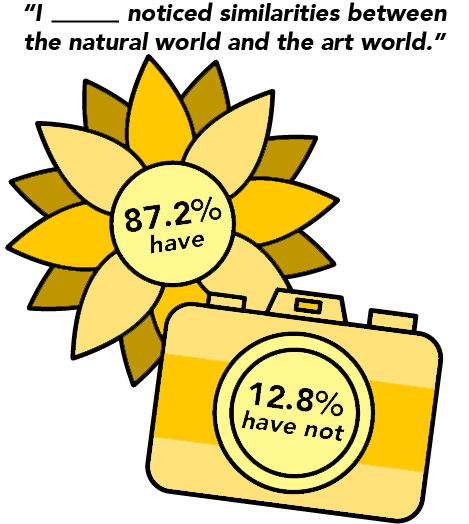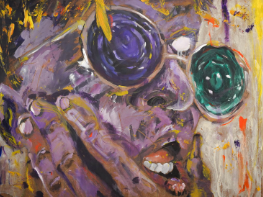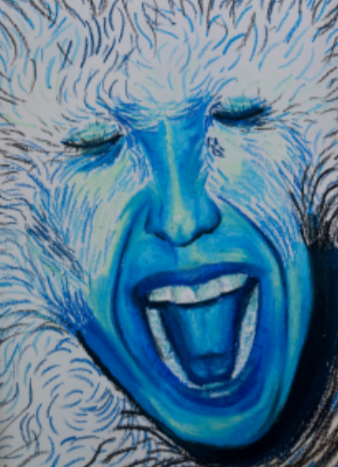Artists find inspiration and creativity for work through their natural surroundings

BLOT GRAPHIC BY DANI MCLAUGHLIN
A survey of 55 students from Apr. 6. to Apr. 13.
May 5, 2021
Creation is a term with countless facets. There is, however, one fact that remains true no matter what: creativity is born from inspiration. Some find it in people — friends, family or strangers — who fascinate them and capture their attention. Others find it in their surroundings, specifically, their natural environment.
From the ancient myths told to explain natural phenomena, to the everyday sayings we use that have roots in nature, our natural environment has an ever-present influence on both our lives and creativity.
CHS Design and Studio Art Teacher Shelley Ortner explained that nature is a strong influence in her work.
“As a family, we spend much of our time outdoors hiking, kayaking, etc. and my camera is never far from my side as I snap photos of things that might influence work down the road,” Ortner said.
Artists not only gain inspiration from nature, but many of the mediums they use come from natural materials themselves.
In the prehistoric days, cavemen would make paint from materials including hematite, iron and charcoal. They were using nature to create, not only in the sense of influence, but also with a literal connotation.
“I personally have bamboo and natural bristle paint brushes… Even the tempera paint we use for color wheels includes egg yolks in the mix,” Ortner said.
Aside from the fine arts, nature has also bled into many aspects of music and the manipulation of sound. The Earth is home to many natural sounds, with some of the earliest instruments being created from organic materials such as gourds and hollowed out wood.
Today, some people even tune their modern-day instruments to A = 432 Hz because it mathematically matches the vibration of the universe.
The universe not only carries a natural rhythm, but it also seems to have a favorite number: three.
Photographers and writers alike use the number three as a guide that suits their medium. In photography, the rule of thirds is used to frame the subject in a third of the frame, while writers often group elements, characters or symbols in threes. This is done in order to create a desired effect, such as drawing attention to a particular story element, or subject in a photo.
Although nature and art will always grow alongside one another, they will also be forever separated.
Some have explored the idea that art is merely nature with thought and mediums applied. For example, a picturesque view is not art until someone sketches it, takes a photograph or begins to paint it.
In simplest terms: without nature, art would not exist.
“Without nature and man’s curiosity of the natural world, we would not have many of the great artworks and designs we have today,” Ortner said.













